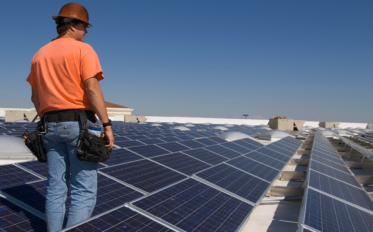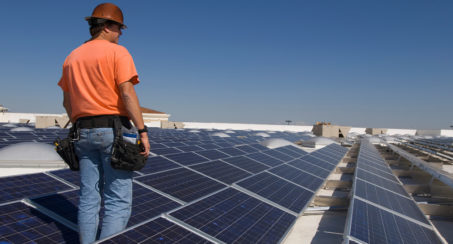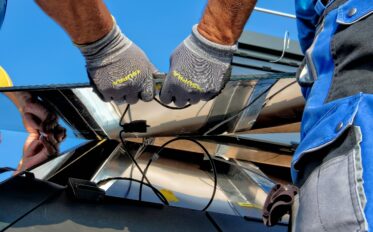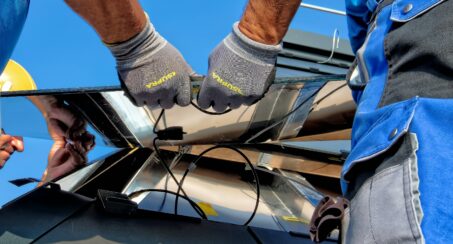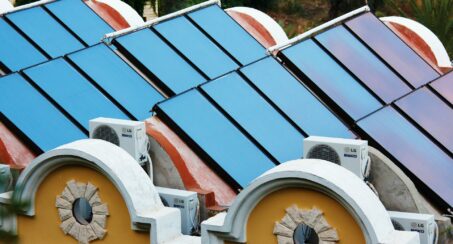Solar power plays a key role in combatting global warming and reducing air pollution caused by burning fossil fuels, such as gas and coal. While there are no global warming emissions associated with the actual generation of electricity using solar power, there is an environmental impact associated with their production, which could be mitigated thanks to better design.
Solar photovoltaic systems produces power through an arrangement of several components including solar panels to absorb and convert sunlight into electricity, a solar inverter to change the direct electric current (DC) to compatible alternating current (AC) sent to the grid, as well as mounting, cabling, and other electrical accessories.
Between 2005 and 2015, the installed solar PV power in Europe increased 50 fold to reach 95 GW. In 2015, solar PV power represented 11% of the electricity produced through renewable sources in the EU (cf. here).
The EU set a target of 20% of the final energy consumption to be produced by renewable sources in 2020, and this target was increased to 32% for 2030 (see here). Solar PV energy will be instrumental in reaching this target, but we need to ensure that the mainstreaming of this technology does not have adverse effects on the environment.
In terms of environmental impact, the main areas of concern are:
- The energy and resources required for their production, particularly for the PV panels;
- The critical materials they contain;
- What happens to them at the end of their life.
Moreover, the energy-saving potential for solar systems is significant, as solutions exist to make them more efficient and therefore more performant. Using PV panels longer would also reduce their carbon footprint and keep critical materials in use.
WHAT IS THE EUROPEAN UNION DOING?
The Joint Research Center of the European Commission is working on a study analysing the legal instruments (Eecodesign, Ecolabel, Green Public Procurement) that could be used to ensure that solar PV energy remains a clean source of energy. The study should be finalised by the end of 2019 and the Commission will then take a decisiondecide on the best option or combination of options for legal instruments to be pursued.
WHAT DOES THE COOLPRODUCTS CAMPAIGN WANT?
- Limit the carbon footprint related to the (energy- and resource- intensive) production of solar photovoltaics;
- Ensure that solar photovoltaic systems remain efficient along their lifetime, and are durable, repairable and recyclable;
- Provide proper information to consumers regarding the performance and durability of the systems.
Coolproducts technical input and position papers:
Further reading:
2016 – Green Alliance – Better Products by Design
2018 – IRENA – Renewable Energy Prospects for the European Union


